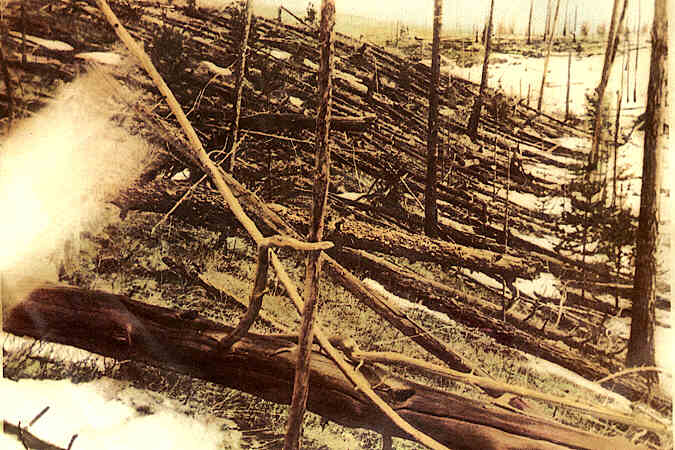Siberia, Russia

The Tunguska event occurred on June 30, 1908, in a remote area near the Tunguska River in Siberia, Russia. The event was so powerful that it flattened trees over an area of about 2,000 square kilometers, and the shockwave was felt as far away as Europe and Asia.
The cause of the Tunguska event is still unknown, but scientists believe that it was most likely caused by the explosion of a meteoroid or comet in the Earth’s atmosphere. The explosion is estimated to have been equivalent to 10-15 megatons of TNT, which is more powerful than the atomic bomb dropped on Hiroshima.
The Tunguska event was not witnessed by anyone, and there were no human casualties. However, it had a significant impact on the environment and the local population. The explosion flattened about 80 million trees, which would have covered an area about the size of a major city. The shockwave from the explosion was so strong that it shattered windows and knocked people off their feet as far away as 400 kilometers from the epicenter.
The Tunguska event remains a subject of intense scientific study and speculation. Researchers have used a variety of methods to try and understand what happened, including analyzing tree rings, soil samples, and eyewitness accounts. Some theories suggest that the event was caused by a black hole or a mini-black hole passing through the Earth’s atmosphere, while others propose that it was caused by a comet or asteroid exploding in the atmosphere.
Visit
Tunguska event, Evenkiysky Rayon, Krasnoyarsk Krai, Siberian Federal District, Russia
Comments